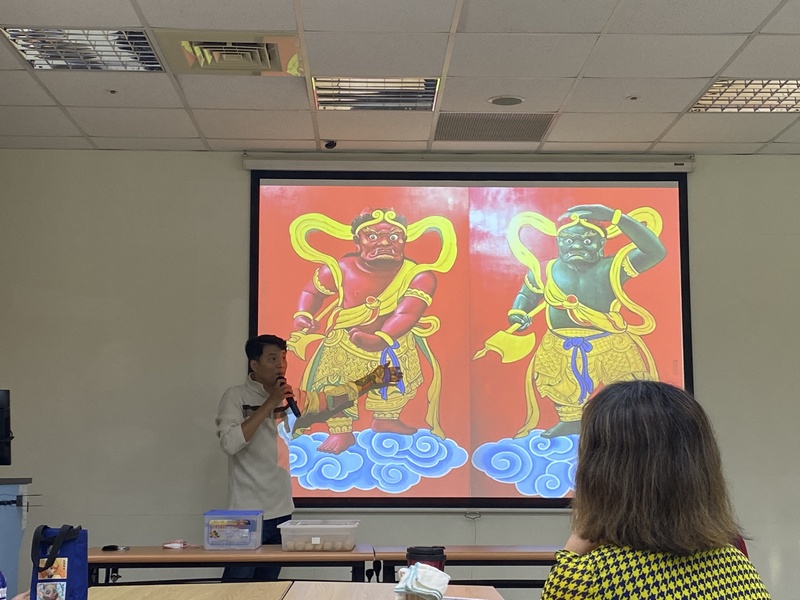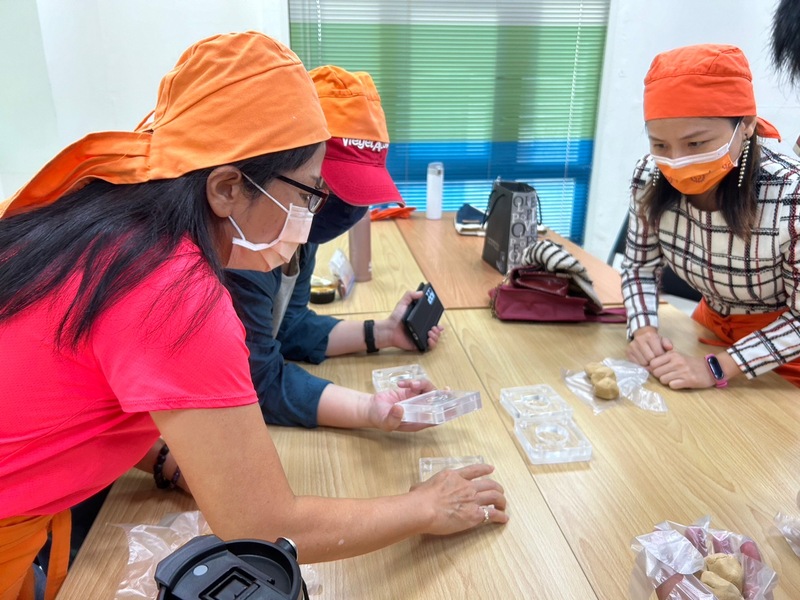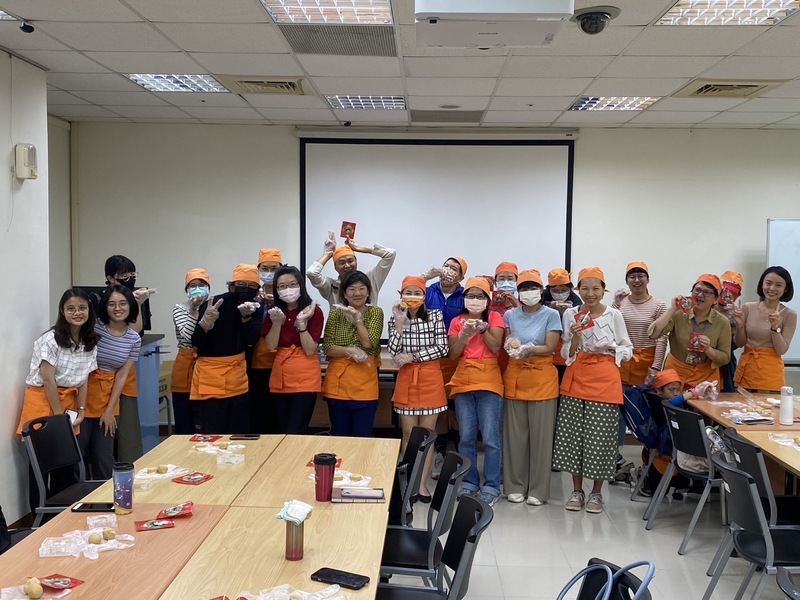by Rita, Projecy Student
Wenzao Ursuline University of Languages' University Social Responsibility Practice Program, "OUR TOWN Community Sustainable Cross-Domain Collaborative Platform Project”has initiated various collaborative communities this semester. Among them, the "Cultural Experience Design Community" had the privilege of collaborating with Kaohsiung Cultural Association. They invited Manager Chen Zhenrong to share his experiences and insights on various types of gate gods and their respective relationships with temples, thus acquainting everyone with traditional door god culture. Through the handicraft activity of making the Gate God Mung Bean Cake, participants were led to gain a deeper and more comprehensive understanding of the concept and symbolic significance of "gate gods" through direct experience.
The series of activities for this academic year has come to a close, with the final session led by Manager Chen Zhenrong, who shared lively and historically rich stories about the old town gate gods. Manager Chen explained the origin of the gate god sculptures above the North Gate of the old town in Zuoying. It stemmed from the “Lin Shuangwen event” during the Qing Dynasty. At that time, people were deeply afraid of the unrest, so they decided to move the town from Xinglong Village (now Zuoying) to Xiapitou (now Fengshan). However, later they received an imperial edict asking residents to move back to Xinglong Village. Many people were unwilling, so they fabricated rumors that a magistrate died after the completion of the new town, creating the notion that Zuoying's old town was an unfavorable location for Feng Shui, providing an excuse to continue living in Fengshan. Subsequently, to reassure people about returning to the old town, officials decided to carve gate god sculptures on the North Gate, symbolizing their function of "guarding," "suppressing evil," and "warding off demons." This is the locally circulated story of gate gods in Zuoying. Through this story, Manager Chen helped many participating students understand that behind the seemingly ordinary gate god sculptures lies a connection to real historical events that occurred in the area.
Continuing on, Manager Chen proceeded to introduce the different categories of gate gods, along with the reasons and characteristics behind each. For instance, natural phenomena can also be anthropomorphized into deities. For example, the Wind God may carry a banana leaf fan to create wind, while the Rain God may hold a willow branch in one hand and a bowl in the other; when the willow branch touches the water in the bowl, it can sprinkle water, symbolizing rain. Additionally, when we see Guan Gong alongside another figure, typically a cultured white-faced character, we can infer that it is a Buddhist temple, as Guan Gong is said to have saved this white-faced monk in the Romance of the Three Kingdoms. Later, Guan Gong attained enlightenment after certain events and decided to "lay down the butcher's knife and become a Buddha on the spot," thus earning the title of "Garland Bodhisattva" by later generations. When observing Thousand-Mile Eyes and Favorable Wind Ears, one can determine that it is a temple dedicated to Mazu, while the QiYe and BaYe (Guarding Deities) are associated with Town God temples. From the descriptions and identifications above, one can understand the unique details and background stories of gate gods, thereby gaining insights into the nature of temples and even extending to the broader local historical context and cultural manifestations.
In terms of hands-on activities, this session involved making gate god cakes using mung bean cake as the main ingredient. Using molds imprinted with patterns of "gate gods" and "town gates," participants rolled the mung bean cake mixture into balls and placed them into the molds. After demolding, clear and adorable patterns could be seen! Such simple and delicious cake-making activities were found to be both enjoyable and meaningful by the participants. They particularly appreciated the opportunity to listen to rich cultural and historical stories while engaging in hands-on experiences. This combination helped them feel closer to their own traditional culture rather than feeling distant and unfamiliar. It is hoped that through this experience, the participants will develop a greater interest in local culture and contribute to its promotion and preservation.

Manager Chen Zhenrong from Kaohsiung Cultural Association discusses the types of gate gods and their relationship with temples.

The participants use molds to make cakes and pastries.

Handmade parent-child fun time

The lecturer took a group photo with participants and community teams
